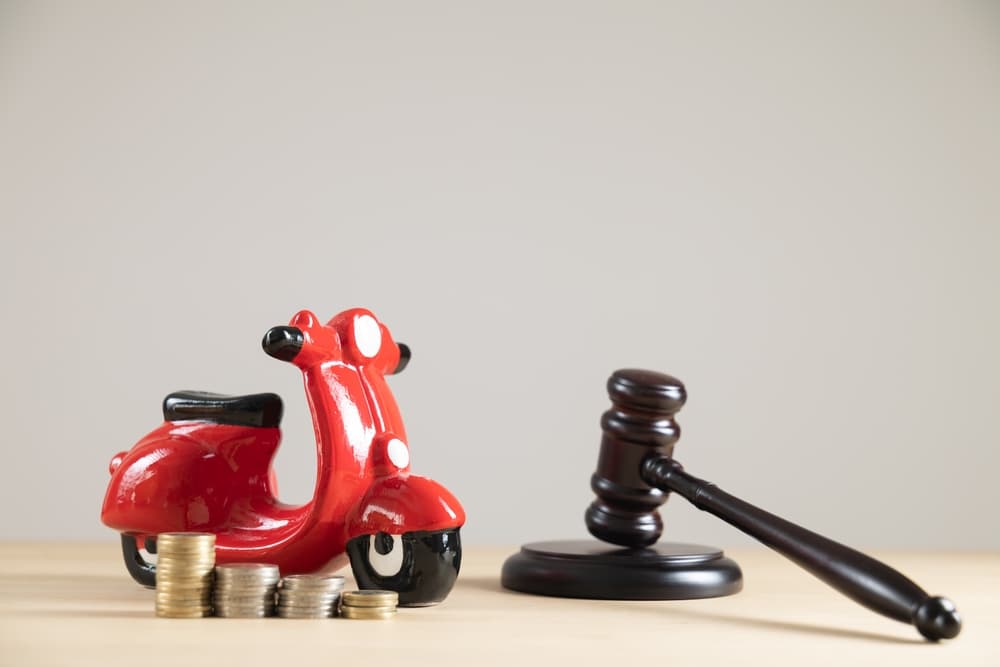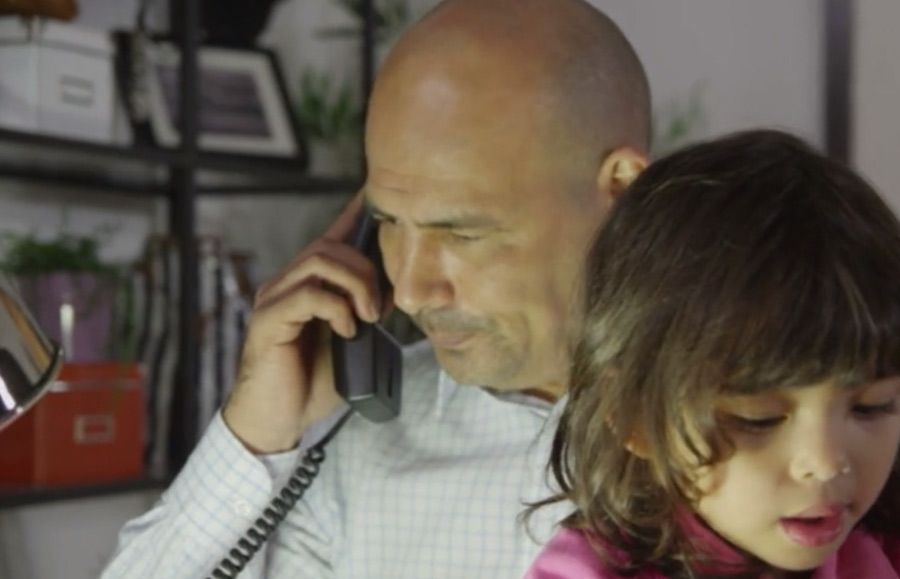When you’re involved in a motorcycle accident, determining fault isn’t always straightforward.
While another driver may bear primary responsibility for the crash, you might wonder about your own potential contribution to the incident.
Understanding how partial fault affects your right to compensation will help you protect your legal rights and secure a fair recovery for your injuries.
New York’s Pure Comparative Negligence Rule: What You Need to Know
New York follows a pure comparative negligence system. This legal framework allows injured parties to recover damages even if they share responsibility for the accident. However, your compensation will be reduced by the percentage of your fault.
This system confirms motorcyclists can seek compensation even when they bear some responsibility for the crash. The court or insurance companies will evaluate all factors contributing to the crash and assign fault percentages accordingly.
How Fault Percentages Are Determined After a Motorcycle Accident
Insurance adjusters and courts will examine factors when determining fault allocation, such as:
- Traffic law violations by each party involved
- Road and weather conditions at the time of the accident
- Actions taken by each party to avoid the collision
- Witness statements and available video footage
- Expert testimony regarding accident reconstruction
- Vehicle maintenance records and equipment conditions
Your final compensation will reflect this assessment, but importantly, you maintain the right to pursue damages even if you were partially responsible.
Common Ways Motorcyclists May Share Fault
While many motorcycle accidents result from other driver’s negligence, there are situations where a motorcyclist might share some responsibility:

Lane Splitting
Although common in some states, lane splitting (riding between lanes of traffic) is illegal in New York. If you were lane splitting when the accident occurred, this could contribute to your percentage of fault.
Speed-Related Issues
Exceeding the speed limit or driving too fast for conditions might increase your share of responsibility in an accident.
Equipment Violations
New York law requires motorcyclists to wear DOT-approved helmets and use proper safety equipment. Failing to comply with these requirements could affect your claim.
Following Distance
Motorcyclists are required to maintain proper following distances. Insufficient following distance could result in partial fault assignment if a collision occurs.
How Other Drivers Are Often Primarily Responsible
Despite potential contributing factors on the motorcyclist’s part, other drivers frequently bear primary responsibility for motorcycle accidents. Common scenarios include:
Failure to Yield
Many drivers fail to properly yield right-of-way to motorcyclists, particularly at intersections or when making left turns. This remains one of the leading causes of motorcycle accidents.
Blind Spot Accidents
Drivers often claim they “didn’t see” the motorcycle, but this excuse doesn’t absolve them of responsibility. All drivers have a duty to thoroughly check their blind spots before changing lanes or making turns.
Distracted Driving
Distracted driving has become increasingly prevalent. When drivers take their attention off the road, motorcyclists are particularly vulnerable to the consequences.
Following Too Closely
Drivers who tailgate motorcycles leave insufficient stopping distance, creating dangerous situations that often lead to rear-end collisions.
Aggressive Driving Behaviors
Some common aggressive driving behaviors that endanger motorcyclists include:
- Sudden lane changes without signaling
- Cutting off motorcycles in traffic
- Road rage incidents
- Excessive speed
- Running red lights or stop signs
- Weaving through traffic
The Impact of Weather and Road Conditions
Environmental factors affect both motorcycle handling and liability determination:
Weather-Related Considerations
- Reduced visibility in rain or fog
- Slippery conditions from precipitation
- Strong crosswinds
- Extreme temperatures affecting tire grip

Road Hazards
- Potholes and uneven pavement
- Debris on the road
- Construction zones
- Poor drainage
- Inadequate lighting
- Missing or obscured traffic signs
Protecting Your Rights After a Motorcycle Accident
When you’re involved in a motorcycle accident where the fault might be shared, taking specific steps will help protect your right to compensation:
1. Document Everything
- Take photos
- Gather contact information from witnesses
- Get a copy of the police report
- Keep records of all medical treatment
- Save all accident-related expenses
- Preserve damaged gear and equipment
2. Avoid Making Statements About Fault
After an accident, it’s natural to want to apologize or make statements about what happened. However, these statements could be used against you later. Avoid discussing fault with:
- The other driver
- Insurance adjusters
- Witnesses
- Social media followers
- Passengers or bystanders
3. Go to the Doctor
Some injuries may not be immediately apparent, even if you initially feel fine. Prompt medical attention:
- Creates a record of your injuries
- Demonstrates the seriousness of your claim
- This prevents the defense from arguing that your injuries came from another source
- Identifies potential complications early
4. Preserve Evidence

Take steps to preserve critical evidence:
- Don’t repair or modify your motorcycle
- Save torn or damaged protective gear
- Keep all medical documentation
- Maintain a daily pain and recovery journal
- Save all communication with insurance companies
The Importance of Legal Representation
When partial fault is a factor in your motorcycle accident case, having experienced legal representation becomes a must. A skilled motorcycle accident attorney will work hard to:
Minimize Your Percentage of Fault
Your attorney will gather evidence and present arguments to minimize your assigned percentage of fault, thereby maximizing your potential compensation.
Counter Insurance Company Tactics
Insurance companies often try to shift more blame onto motorcyclists than is warranted. Your lawyer will protect you from these tactics and ensure fair treatment.
Calculate Full Damages
An attorney will make sure all damages are properly documented and calculated, including:
Medical Expenses (current and future):
- Current: This includes all medical bills incurred due to the injury, such as hospital stays, surgeries, doctor visits, medication, physical therapy, and medical equipment.
- Future: This accounts for anticipated medical expenses that may arise in the future due to the injury, including ongoing treatments, medications, surgeries, and medical equipment.
Lost Wages and Earning Capacity:
- Lost Wages: This covers the income lost due to time off work as a result of the injury.
- Earning Capacity: This accounts for any future loss of income due to reduced earning potential caused by the injury, such as the inability to work at the same level or in the same profession.
Pain and Suffering:
- This compensates for the physical and emotional pain experienced as a result of the injury. It’s a subjective measure and is difficult to quantify, but an attorney will help assess a fair value based on the severity and duration of the pain.
Property Damage:
- This covers the cost of repairing or replacing any damaged property caused by the accident, such as a vehicle or personal belongings.
Rehabilitation Costs:
- This includes expenses related to rehabilitation services, such as physical therapy, occupational therapy, and counseling, aimed at helping the injured person recover and regain their quality of life.
Mental Anguish:
- This compensates for emotional distress, anxiety, and psychological trauma caused by the injury.
Loss of Enjoyment of Life:
- This accounts for the inability to participate in activities and hobbies previously enjoyed due to the injury.
Modifications to Home or Vehicle:
- This covers the cost of modifying a home or vehicle to accommodate the needs of an injured person, such as installing ramps or wheelchair lifts.
Future Medical Care Needs:
- This accounts for any future medical care required due to the injury, such as ongoing treatments or medications.
Loss of Consortium:
- This applies in cases where the injury affects the injured person’s relationship with their spouse or partner. It compensates for the loss of companionship, intimacy, and other aspects of the relationship.
Calculating damages is difficult and requires careful documentation and analysis. An experienced motorcycle crash attorney will help confirm all damages are correctly identified and valued.
Understanding Long-Term Implications
Motorcycle accidents have lasting effects that need to be considered when pursuing compensation:

Physical Recovery
- Multiple surgeries or procedures
- Extended rehabilitation periods
- Permanent disabilities
- Chronic pain management
- Future medical needs
Financial Impact
- Lost earning capacity
- Career changes
- Medical debt
- Ongoing treatment costs
- Insurance premium increases
- Modified transportation needs
Emotional Consequences
- Post-traumatic stress disorder (PTSD)
- Anxiety about riding or driving
- Depression during recovery
- Impact on personal relationships
- Loss of enjoyment of activities
Statute of Limitations Considerations After a Motorcycle Crash
In New York, you generally have three years from the accident date to file a personal injury lawsuit.
Don’t let concerns about partial fault delay your decision about legal help, as waiting could jeopardize your right to compensation.
Building a Strong Case Despite Partial Fault
Even if you believe you may share some fault for the accident, there are several ways to strengthen your case:
- Gather Independent Evidence
- Traffic camera footage
- Surveillance video from nearby businesses
- Expert accident reconstruction
- Cell phone records (if distracted driving is suspected)
- Weather reports
- Road condition documentation
- Maintenance records
- GPS data when available
- Identify Contributing Factors
Your attorney will identify contributing factors to the accident that weren’t immediately apparent, such as:
- Poor road maintenance
- Inadequate signage
- Defective vehicle parts
- Construction zone hazards
- Lighting conditions
- Traffic signal timing
- Road design issues
- Establish the Other Driver’s Greater Degree of Fault
Focus on demonstrating how the other driver’s actions were more significant in causing the accident through:
- Witness statements
- Physical evidence
- Expert testimony
- Traffic violation citations
- Historical driving records
- Phone records showing distraction
- Vehicle maintenance records
The Role of Insurance in Partial Fault Cases
New York’s no-fault insurance system adds another layer to motorcycle accident cases. Unlike car accidents, motorcyclists are not automatically covered by no-fault insurance benefits. This means:
- You’ll need to rely more heavily on liability claims
- Personal health insurance may need to cover initial medical expenses
- The importance of establishing the other driver’s fault becomes even more critical
Insurance Considerations
- Understanding policy limits
- Dealing with multiple insurance companies
- Navigating supplemental coverage
- Addressing coverage disputes
- Managing subrogation claims
Moving Forward After a Motorcycle Accident
Sharing some fault for an accident doesn’t mean you don’t deserve compensation for your injuries. New York’s pure comparative negligence system exists because accidents aren’t always 100% one party’s fault.
Focus on Recovery
While legal matters are important, your primary focus should be on:
- Following your medical treatment plan
- Attending all scheduled appointments
- Participating in prescribed therapy
- Taking care of your mental health
- Building a support system
- Making necessary lifestyle adjustments
Contact a Motorcycle Accident Lawyer at Rosenberg & Gluck LLP for Help
If you are concerned about partial fault after a motorcycle accident, don’t let that prevent you from seeking the compensation you deserve. At Rosenberg & Gluck LLP, we know how to handle shared fault scenarios effectively.

Our experienced attorneys will:
- Evaluate your case thoroughly
- Explain your legal options
- Fight to minimize your percentage of fault
- Work to maximize your compensation
- Handle all communications with insurance companies
- Prepare your case for trial if necessary
- Protect your rights throughout the process
- Advocate for your best interests
Contact us today for a free consultation to discuss your motorcycle accident case. Remember, even if you think you might share some fault, you still have rights, and we’re here to protect them.









